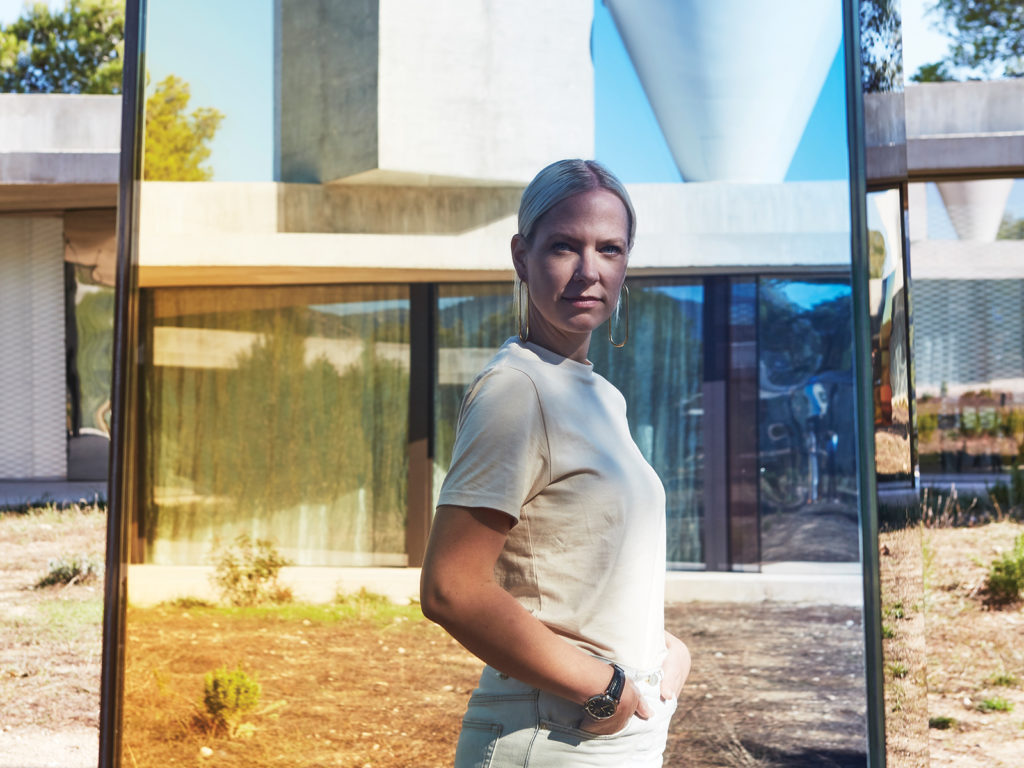
The Rotterdam-based industrial designer Sabine Marcelis arrived at her education and career path later than most. She spent her post-secondary years chasing her dreams of professional snowboarding with back-to-back winters between New Zealand and California, but ultimately made the switch from athletics to design. She’s since established herself as a go-to design collaborator for fashion houses such as Fendi, Isabel Marant, and Burberry, and has become a household name in the process.
Attending university in New Zealand, Marcelis learned many of the technical skills she would utilize later, but as with many technical programs, she found the experience, though important, creatively crippling. It wasn’t until she attended Design Academy Eindhoven—returning to the Netherlands, where she’s since stationed her studio—that she was able to spread her wings. “Having access to different teachers and ways of thinking allowed me to not have to work within a box,” she says. She doesn’t consider her time chasing snow lost years, though: “I’m very happy that I went to both schools and had a few years of non-education before starting university. I was a bit worldlier and more aware of how other industries work.”
Marcelis’s commercial work helped secure her esteem in the industry, making her a sought-after designer, but financial gain is not enough of an incentive when it comes to collaborations. “If it’s clear from the beginning there is not a lot of room for my artistic vision, then I would rather not accept the project—I want to be able to enjoy every single project I work on,” she explains. She is particularly mindful of integrating her artistic vision into an established brand identity: “With the Fendi project, I think it is a really nice example of showing [the brand’s distinctiveness], but at the same time it shows me as a designer.”
It’s this same boundary-setting that defines her work-life divide. While so much of Marcelis’s inspiration is sourced outside of the studio, she does her best to keep work at work, which is why her notoriously stunning apartment (which she shares with her architect boyfriend) is filled with pieces designed and created by her friends—everything but her own work. “I would feel like a narcissist if the entire house was designed by us with my work in it—I think that idea feels very lonely,” she says. “Even if I’m home all by myself, when I look at objects around me, it makes me think of my friends, which is a nice emotion to have.”
Her self-commissioned projects—such as the popular Voie Lights, Dawn Lights, and Candy Cubes—marry function and intrigue, but Marcelis is quick to say she’s not after creating anything too decorative. She hopes the takeaway response is that of curiosity, inciting a moment of wonder and begging the viewer to take a deeper look to unravel the layers of both form and function.
It’s this idea of curiosity that energizes Marcelis’s work with light and its relationship to colour: “It’s the perfect medium to create these insane effects—there’s nothing without light, and it’s endless with it.” While she incorporates neon lights with coloured glass and resin in some projects, she allows the natural or external light to do the work on others. Her commercial installation Solo Sundial is an obelisk in the middle of the Solo House in Spain, which compels the sun to create visual wonders, shifting the shadows and reflecting blue and orange hues onto the surrounding ground.
The community Marcelis has built around herself, both within her studio and with the fabricators she works with, allows her to think larger than herself. But it’s problem-solving the impossible and having a diverse set of projects that keeps Marcelis’s creative candle burning.

